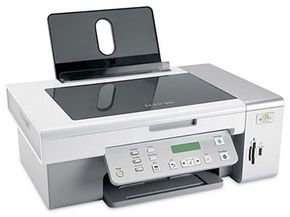Mark Twain boasted in an unpublished autobiography that he was the first author to use a typewriter for fiction. He wrote that he dictated his work to a secretary, who in turn used a Remington typewriter. Twain submitted his manuscript for "The Adventures of Tom Sawyer" in a typewritten format back in 1874 [source: Mark Twain]. The Remington was a manual typewriter, meaning there were no cords or wires to worry about. It was a human-powered, standalone machine -- a wireless printer.
Since the days of Mark Twain, the home office has become much more complex. Today, you might find a computer, a printer, a router, a cable or DSL modem, a fax machine, a phone and other devices all networked together. In a wired network, that can mean a lot of cables. And as we all know, cables have a habit of tangling themselves into a big, frustrating pile of knots.
Advertisement
Another problem with wired networks is that the cables limit where you can position devices. Wired devices are literally tethered to the network. Connecting a computer in one room to a printer in another room could require running cables down a hallway or even up or down a flight of stairs. Keeping cables out of the way becomes a challenge.
Several inventors and engineers have created solutions to these problems, cutting down the number of cables you need to run a home network. Now you can create a document on a computer and send it to a printer without linking the two devices together with a cord. You can even send print jobs from other devices like cell phones or PDAs. And there's more than one way to do it! Whether you use pulses of light or radio signals to send print jobs, you're no longer tied down by cables and cords.
The earliest wireless printing technology used pulses of light to send commands from a computer to a printer. How can printers use infrared light to receive print jobs? Find out in the next section.
Advertisement



